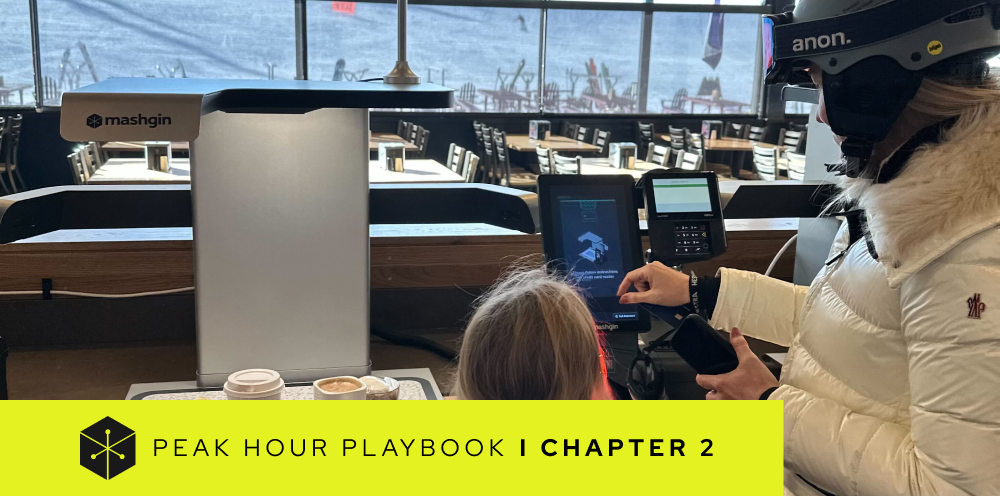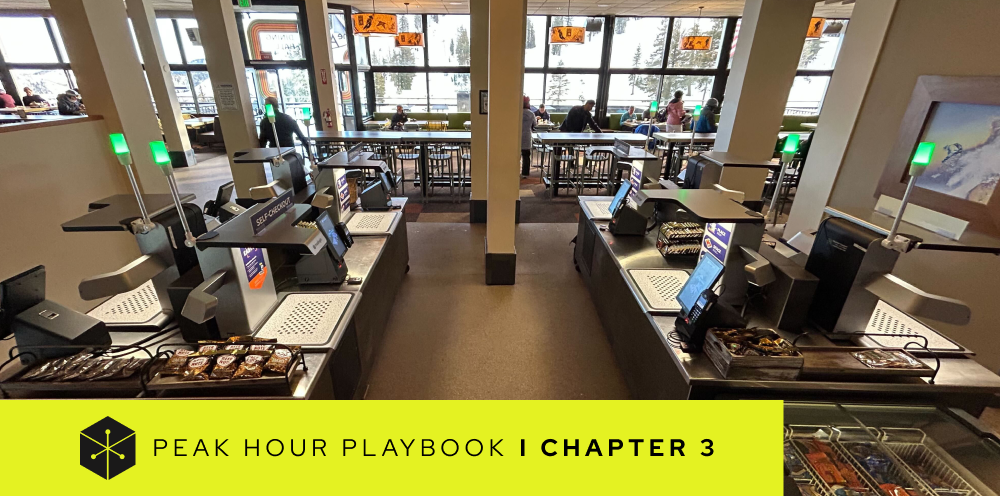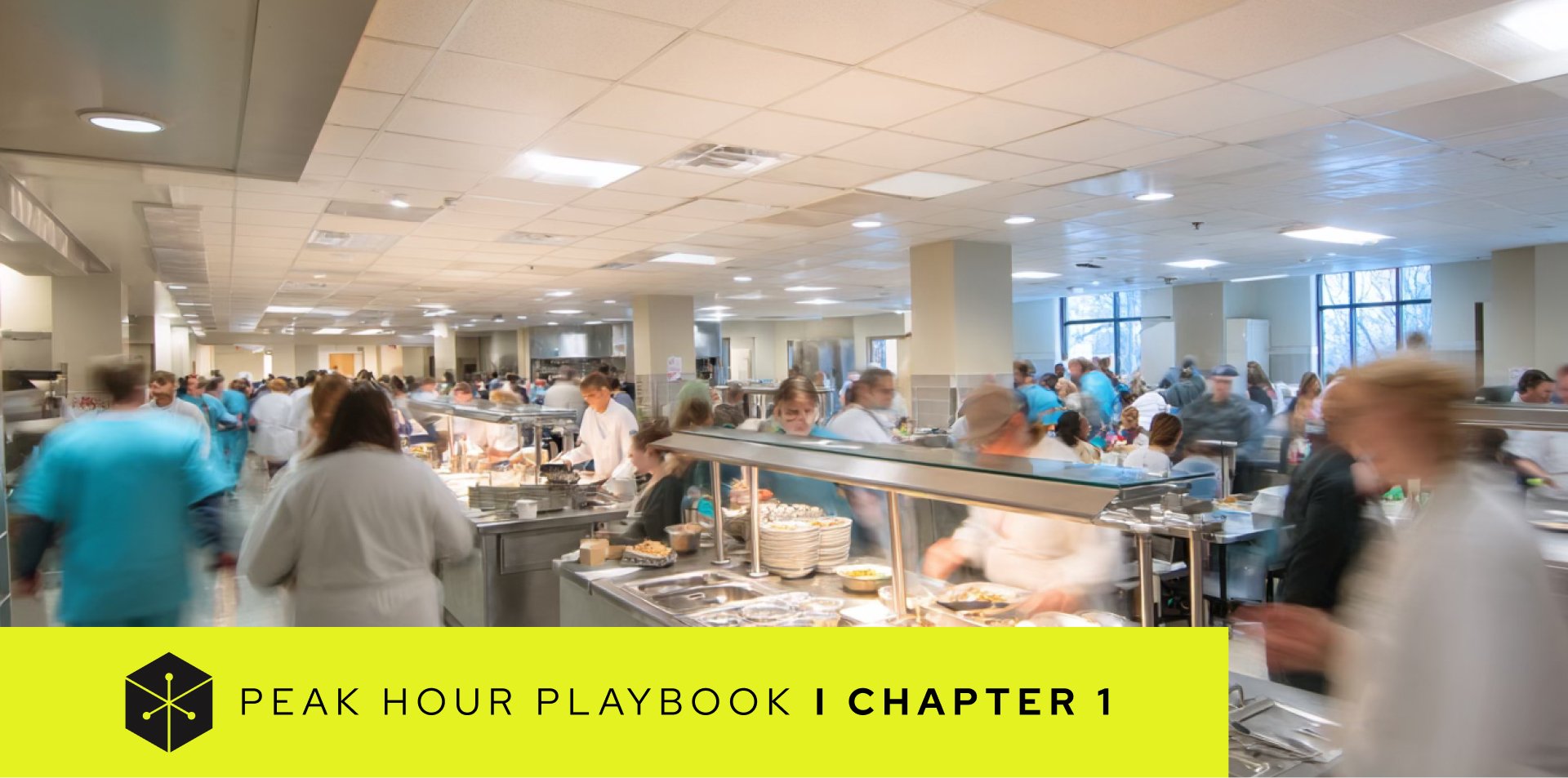Two Ways to Handle the Peak: Throughput Maximization vs. Demand Smoothing

Every dining operator faces the same fundamental problem: a high percentage of daily sales happen in a short window. That creates a daily race to serve as many people as possible before the peak ends and the window closes. The question isn’t whether the surge will happen—it’s how you plan for it.
Thanks to newer checkout and ordering technologies, operators don’t have to keep relying on the same old solutions. Instead, we’re seeing two distinct models emerge that both aim to solve the peak problem, but approach it from different directions.
Model One: Throughput Maximization
Throughput maximization is the most direct approach: build the system to absorb as much volume as possible during the peak window.
The idea is simple: if hundreds or thousands of people are going to show up all at once, your job is to process them as fast as possible. That’s where Mashgin’s AI-powered kiosks are particularly well suited. With transactions completed in seconds, a single cashier no longer limits how many customers you can serve.

Instead of adding more staffed registers, operators add more Mashgin kiosks. Each kiosk acts like a fully capable checkout lane, but without requiring a dedicated employee. This allows operators to scale their transaction capacity directly in proportion to the size of the peak.
At Palisades Tahoe, for example, over 70% of daily food and beverage sales occur between 11:00 a.m. and 2:00 p.m. Wait times used to hit 15 minutes. After deploying 26 Mashgin kiosks across seven locations, wait times dropped by 80 percent and sales on peak days jumped by as much as 40 percent. Palisades didn’t need to expand kitchens or hire dozens of new cashiers—they simply increased their transaction capacity to match demand.
When throughput maximization works best:
- Predictable, unavoidable peaks
- Large captive audience (corporate campuses, resorts, stadiums, student unions)
- Physical space available for multiple kiosks
- Labor constraints that make adding staff impractical
Model Two: Demand Smoothing
Throughput maximization accepts the peak as a given. Demand smoothing tries to prevent it in the first place.
Instead of waiting for all customers to show up at once, demand smoothing spreads orders across a longer time window by offering guests more flexible ordering options. Byte ordering tablets enable guests to place orders in person without waiting in line at a cashier. Mobile ordering allows customers to place orders in advance from their phones or computers. Orders can be prepped ahead of the rush or scheduled for pickup during less crowded periods.

Cleveland Clinic is one example of an operation moving toward this model. With a large workforce operating on varied schedules, many employees prefer the option to order ahead and pick up meals at their convenience. By encouraging mobile ordering and using self-order tablets on-site, Cleveland Clinic reduces congestion during peak hours, improves kitchen production, and provides employees with a more predictable experience, without overbuilding cashier lines.
As Bill Bolton, Director of Retail Operations at Cleveland Clinic, explains:
“Throughput becomes a real challenge… This is why mobile is such a huge push for us, because we have to try to keep people off of our floor…they have a very limited amount of time to come in here and navigate what to eat, and then to get through the lines.”
When demand smoothing works best:
- Variable customer schedules (healthcare, multi-shift operations, hybrid work environments)
- Limited physical space for expanding cashier lines
- Complex or made-to-order menus that benefit from early prep
- Kitchens that need better production pacing
The Common Thread: Checkout Still Matters
Both models approach the peak differently, but they share a common component: frictionless checkout. Whether guests are flowing through at full speed during a peak rush or picking up pre-ordered meals during off-peak times, Mashgin’s AI-powered kiosks allow operators to complete transactions in seconds. That final handoff (the moment when food moves from operator to guest) still needs to happen as fast and smoothly as possible, regardless of which model is in play.
In upcoming posts, we’ll go deeper into real-world examples of both approaches and explore how operators can design the right system for their space, menu, and customer base.

